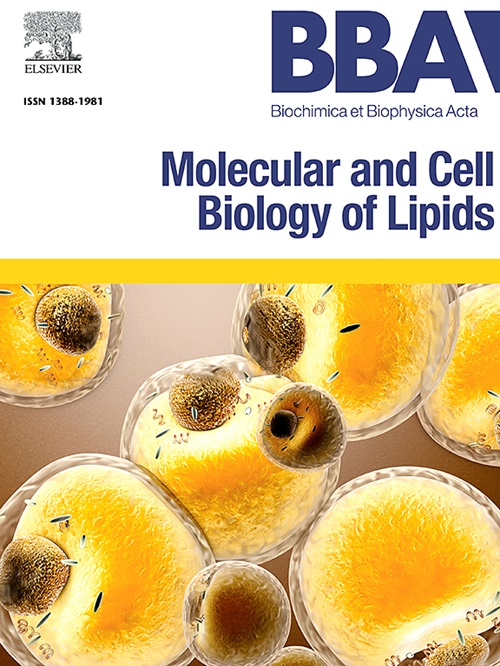Cytoskeleton regulates lipid droplet fusion and lipid storage by controlling lipid droplet movement
IF 3.3
2区 生物学
Q2 BIOCHEMISTRY & MOLECULAR BIOLOGY
Biochimica et biophysica acta. Molecular and cell biology of lipids
Pub Date : 2025-04-04
DOI:10.1016/j.bbalip.2025.159610
引用次数: 0
Abstract
Lipid droplets (LDs) are highly dynamic organelles that maintain cellular lipid homeostasis through size and number control. In adipose tissue, CIDEC plays a crucial role in LD fusion and lipid homeostasis. However, the regulatory factors and mechanisms of LD fusion remain largely unknown. Here, we established a high-throughput LD phenotypic screen on a compound library consisting of 2010 small molecules, and identified 11 cytoskeleton inhibitors that negatively regulate LD size. Using specific inhibitors against each of the three types of cytoskeleton, our data showed that the disruption of microtubules and microfilaments but not intermediate filaments limits CIDEC-mediated LD fusion and growth by reducing LD movement and LD-LD contact. The collective effect of microtubule inhibitors results in a small LD phenotype which favors lipolysis upon activation of cAMP-PKA pathway in adipocytes. Our findings demonstrate that cytoskeleton is involved in the process of LD fusion and growth, indicating their role in lipid storage metabolism.
One-Sentence Summary: Cytoskeleton regulates lipid droplet fusion and lipid storage
细胞骨架通过控制脂滴的运动来调节脂滴的融合和储存。
脂滴(LDs)是一种高度动态的细胞器,通过大小和数量控制维持细胞脂质平衡。在脂肪组织中,CIDEC 在脂滴融合和脂质平衡中起着至关重要的作用。然而,LD融合的调控因子和机制在很大程度上仍不为人所知。在这里,我们在一个由 2010 个小分子组成的化合物库中建立了一个高通量 LD 表型筛选,并发现了 11 种能负向调节 LD 大小的细胞骨架抑制剂。利用针对三种细胞骨架中每一种的特异性抑制剂,我们的数据显示,微管和微丝而非中间丝的破坏会通过减少 LD 运动和 LD-LD 接触来限制 CIDEC 介导的 LD 融合和生长。微管抑制剂的共同作用导致了小LD表型,这种表型有利于脂肪细胞中cAMP-PKA通路激活后的脂肪分解。我们的研究结果表明,细胞骨架参与了小LD的融合和生长过程,表明了它们在脂质储存代谢中的作用。一句话总结:细胞骨架调节脂滴融合和脂质储存。
本文章由计算机程序翻译,如有差异,请以英文原文为准。
求助全文
约1分钟内获得全文
求助全文
来源期刊
CiteScore
11.00
自引率
2.10%
发文量
109
审稿时长
53 days
期刊介绍:
BBA Molecular and Cell Biology of Lipids publishes papers on original research dealing with novel aspects of molecular genetics related to the lipidome, the biosynthesis of lipids, the role of lipids in cells and whole organisms, the regulation of lipid metabolism and function, and lipidomics in all organisms. Manuscripts should significantly advance the understanding of the molecular mechanisms underlying biological processes in which lipids are involved. Papers detailing novel methodology must report significant biochemical, molecular, or functional insight in the area of lipids.

 求助内容:
求助内容: 应助结果提醒方式:
应助结果提醒方式:


